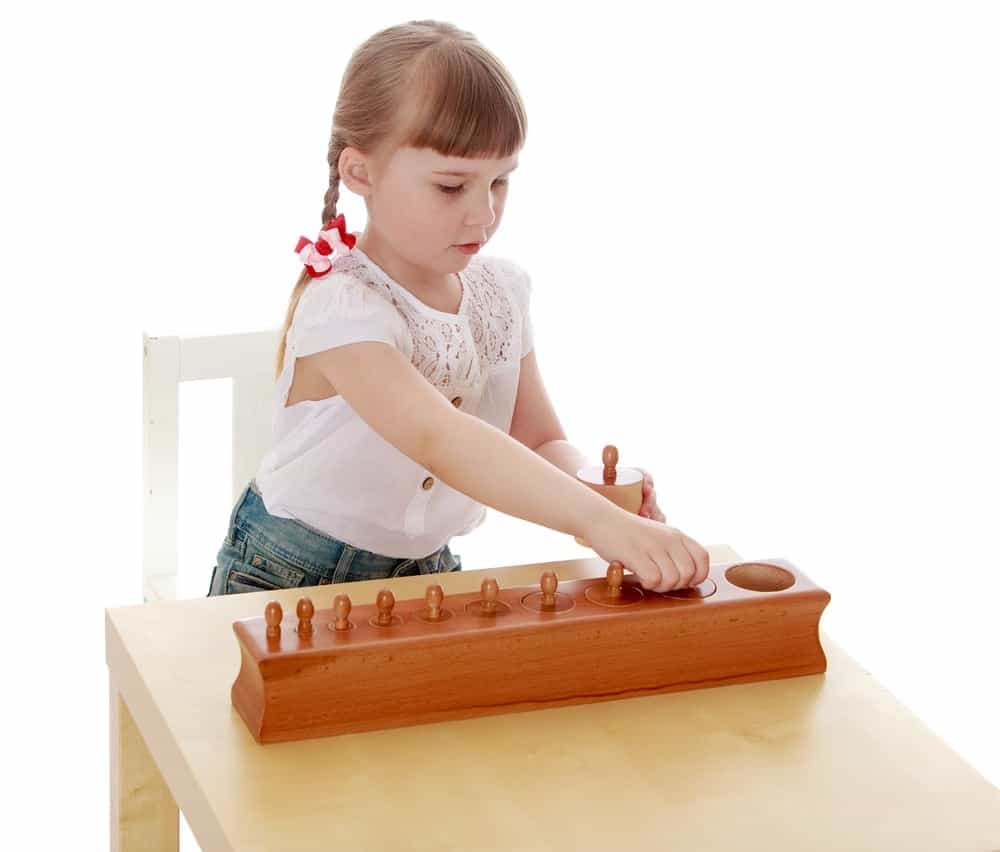by Erin McFarland
Have you ever entered a Montessori Children’s House and noticed that the children are naturally respectful of each other and often helpful? A younger child might ask an older child to sharpen their pencil for them or help them zip their jacket zipper. Perhaps a student might accidentally spill beans from a pouring work on the floor and two children stop what they are doing to help him pick them up. Two students having a disagreement might be witnessed by an older child walking by and she suggests that they go to the peace table to work it out. This is all evidence of what is sometimes called the invisible curriculum of Montessori, the practice of Grace and Courtesy.

Preschoolers Fiona and Quinn doing the 45 layout together.
Dr. Maria Montessori discovered, in her observations of young children that students at a young age like to deal with preciseness and specifics. They crave order and consistency. Therefore this is the most crucial time to apply these principles to their instruction in social graces and manners. When we respect a young learner’s dignity by teaching these basic rules of etiquette, it fills a need in them. Dr. Montessori once taught a small group of children how to politely blow their noses, she explained every step in detail and showed them how to do it quietly and respectfully. After this presentation, the children erupted into spontaneous applause. They were delighted to know how to do something, that to adults would seem so basic. However, to these young learners, their teacher had shown them something they were longing to know how to do. This insightful understanding of the needs of a child is one of the reasons why we incorporate manners and common courtesy in each Montessori Children’s House.

Ellie showing Axel how to roll a table mat in the preschool program.
In E.M. Standing’s book on Maria Montessori (Maria Montessori: Her Life and Work), she is quoted as saying: “We must teach the children the elements of social behavior so that their interest is aroused, and as a consequence, their attention directed to these aspects of life.” In the Children’s House, lessons on Grace and Courtesy could include: how to walk around a rug, how to greet a visitor, how/when to say “excuse me”, how to clean up your snack, how to solve a conflict with a friend, how to ask for help, etc. These lessons teach the child the culture of their Children’s House and how to proceed during their day. The Montessori guide gives presentations on these lessons as they are needed and consistently. Grace & Courtesy lessons provide the foundation of a productive and peaceful learning environment.
One of the main goals of a Montessori education is to prepare students to be successful, contributing, and valued members of society. We want our students to be prepared for the world and become quality citizens. This starts in the Children’s House. Lessons of Grace & Courtesy are the key to modeling peace, learning how to act in social situations, showing respect for each other, and are tools they will use their whole lives.



